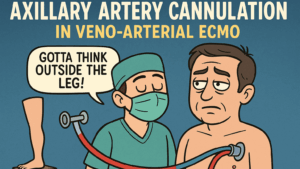This pivotal study from the Annals of Thoracic Surgery Short Reports addresses a pressing question in cardiac surgery: can minimally invasive coronary artery bypass grafting (MICS-CABG) rival traditional sternotomy-CABG for patients with multivessel coronary disease? While the classic sternotomy approach remains the gold standard, concerns over sternum-related complications and increased transfusion rates have pushed the field toward less invasive alternatives. This study provides one of the most comprehensive comparisons yet.
Conducted at Peking University Third Hospital, the research team analyzed data from 2015 to 2019, identifying 1,057 patients who underwent isolated CABG. After applying strict exclusion criteria and matching patients on key variables through propensity score matching, the final cohort included 244 matched pairs for both MICS-CABG and sternotomy-CABG groups. Importantly, only experienced surgeons were included to mitigate bias from learning curves—an often-cited barrier to MICS adoption.
The primary endpoints were completeness of revascularization and the occurrence of major adverse cardiovascular and cerebrovascular events (MACCE), which include death, myocardial infarction (MI), stroke, or repeat target vessel revascularization (TVR). Secondary outcomes included graft patency (evaluated via angiography in the MICS group) and other in-hospital complications.
Key Findings:
- Completeness of Revascularization: The rates were statistically equivalent between the two groups: 95.5% for MICS vs 96.3% for sternotomy (P = .65), confirming that less invasive techniques did not compromise surgical efficacy.
- Graft Patency: Among 601 conduits evaluated in the MICS group, the angiographic patency was a remarkable 96.2%. Notably, postprocedural angiography became routine from 2015-2019 for quality assurance, with 95.1% of MICS patients receiving it.
- MACCE Outcomes: Over a 5-year follow-up (mean 48 months, max 60 months), MICS and sternotomy groups had similar MACCE rates—19.9% vs 22.1%, respectively (HR 0.80, P = .39). This was consistent across all components: death (10.6% vs 12.9%), MI (5.6% vs 4.2%), stroke (6.7% vs 6.6%), and TVR (1.9% vs 1.8%).
The figures on pages 4 and 5 visually underscore these findings. Figure 2 shows overlapping MACCE curves over five years for both groups, and Figure 3 breaks down hazard ratios by event type and follow-up period, with no statistical divergence between cohorts.
Additional Insights:
- Use of Arterial Grafts: MICS-CABG patients were more likely to receive multiple arterial conduits (26.2% vs 14.8%, P = .002). This is important because arterial grafts have higher durability and patency compared to venous grafts.
- Fewer Transfusions: Only 11.5% of MICS patients required transfusion, compared to 20.9% in the sternotomy group (P = .005), highlighting the minimally traumatic nature of the procedure.
- Postoperative Complications: In-hospital events like reintubation, re-exploration, and perioperative MI showed no significant differences, reflecting equal safety profiles.
A notable 5.3% of MICS patients underwent unplanned stenting as part of a staged hybrid procedure—demonstrating a flexible, integrative care approach.
Clinical Implications:
The study’s implications are far-reaching. MICS-CABG, when performed by experienced surgeons, offers comparable clinical outcomes to traditional CABG without compromising safety or efficacy. Its benefits extend to faster recovery, fewer transfusions, and the potential to avoid the morbidity of sternotomy, especially for patients with fragile sternal structures due to age, diabetes, or osteoporosis.
The “no-touch” surgical technique employed in MICS—which avoids manipulation of the ascending aorta—is especially beneficial for patients with aortic calcification or dilation. Combined with bilateral internal thoracic artery (BITA) harvesting and T/Y graft configurations, MICS-CABG demonstrates surgical innovation that aligns with long-term patient safety.
Limitations:
Despite its strengths, the study has some limitations. It was conducted in a single high-volume academic center, which may limit generalizability. Furthermore, only the MICS group received routine postoperative angiography, and the study lacked early postoperative quality-of-life data—key in evaluating the benefits of minimally invasive procedures.
Conclusion:
MICS-CABG has emerged as a compelling alternative to conventional CABG in suitable patients with multivessel coronary artery disease. This study offers robust evidence of its non-inferiority in critical endpoints like revascularization completeness and long-term outcomes. As surgical expertise grows and minimally invasive technology matures, MICS could shift from an exception to a new standard in cardiac revascularization.







